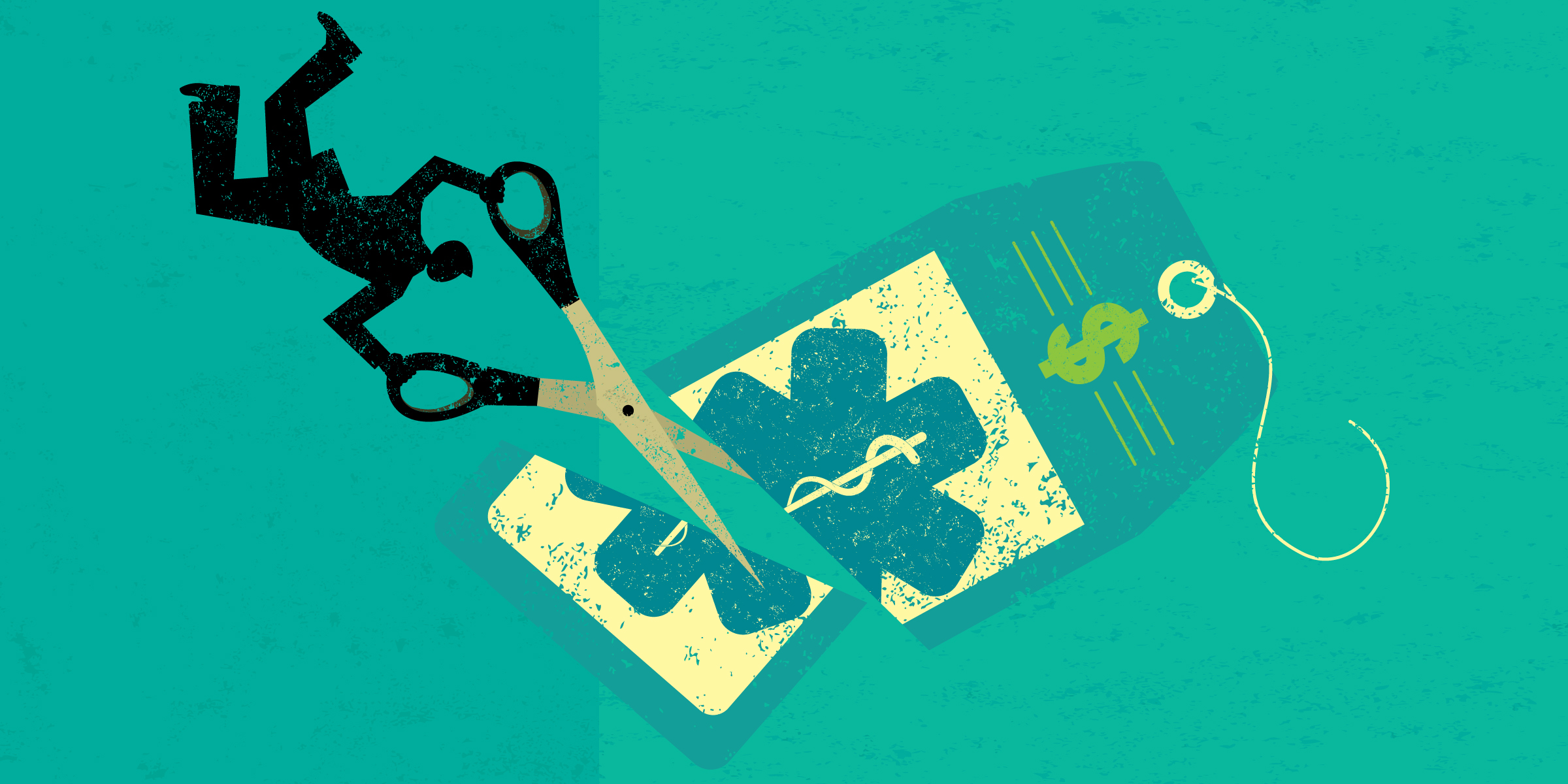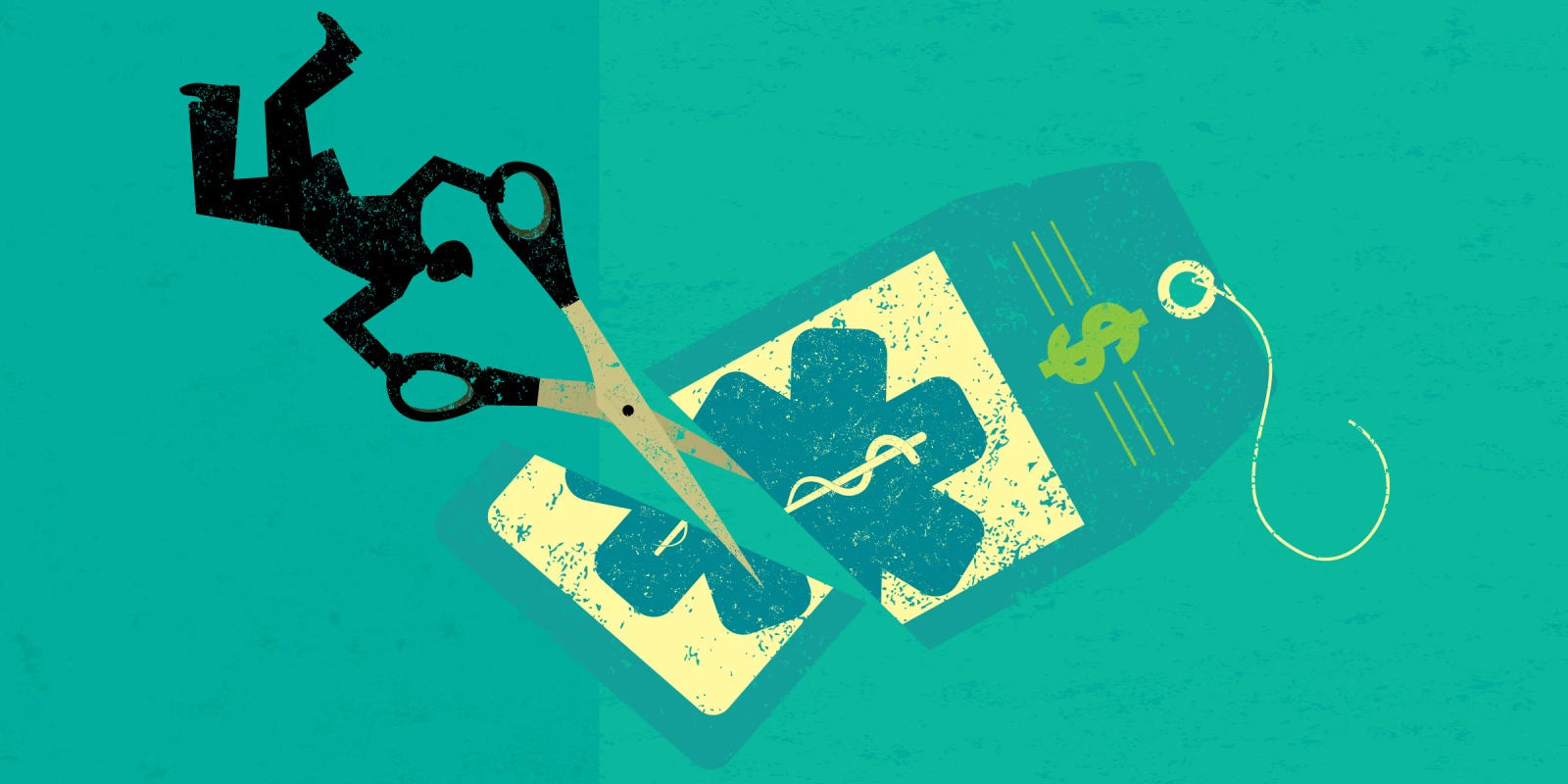
As practitioners, we often focus on resolving the patients' immediate concerns, but what patients may need are resources, better patient experiences, and clarity. We invite you to look beyond the urgent problem and focus attention on personalized health solutions and goals for medication cost. Studies have found we are frequently out of touch with our patients' frustrating financial struggles. High drug prices are forcing many patients to make difficult and sometimes troubling choices, such as deciding between buying the medicines they need and paying for food or other bills (1). Not being able to afford different kinds of drugs can be just as dangerous, even if the effects are not visible right away. Missing medications can have severe consequences and may lead to hospitalizations. Imagine a case where a patient may be dealing with a heart condition. They can be at higher risk of having an early heart attack, heart failure, or stroke. The rising costs of health care in the U.S. and, in particular, prescription drugs, remains a challenge to our health care system.
Common reasons for medication cost-burdens can include a plethora of issues; they can range from lack of coverage to unmet deductibles, such as entering a coverage gap due to job transition or entering the "donut hole." There can also be operational red tape such as pharmacies not having the correct insurance on file (2). Surprisingly, other national variations, such as geographic location, can contribute to non-compliance and rising costs. According to a nationally representative sample of prescription claims, drugs cost as much as 17% more than the national average in San Francisco and New York, and as much as 21% less than the national average in Atlanta and Houston (3). With all this confusion and variability, health professionals' ability to promote cost-effective prescription drug use is critical. Collaborating as a virtual team with nearby pharmacists and pharmacies helps us unite in assisting and advocating for the patient and improving the patient experience proactively.
Patients who can't afford their medication are unfortunately reluctant to self identify and may not be great about advocating for their needs due to age, health literacy, or other barriers.
Research in several settings shows patients are reluctant to admit, both in clinic visits and after, that they are unable to afford a medication they have been prescribed (4). Research also indicates that patient satisfaction and physician relationships are improved if prescribers systematically and frequently ask patients about affordability concerns in our daily workflows (5).
In a setting where a care team is in place, contacting the patient can help unearth affordability concerns. Anecdotal experience shows some patients will not admit a medication is too expensive until months of suboptimal lab tests show no progress. Some thoughtful groups, such as the American College of Physicians, are experimenting with tools to assist with navigating these conversations (6). Asking patients about the cost and burden of their medication is one of the most effective ways to help manage compliance and reduce cost of care. In addition, partnering with local pharmacists and staff in problem-solving can be very effective in engaging other patient advocates to reach optimal clinical goals.
Here are some tips that help proactively advocating for a patient’s care:
- Deprescribing and non-pharmacological interventions: Consider other measures such as discontinuing non-effective medication, weight loss, relaxation, etc. These can often make a big difference and can be cost-effective measures (7).
- Navigating the insurance arena: Insurance codes and plans often need decoding. It can often help the patient avoid non-adherence issues by understanding their coverage plan and formulary (8). Regularly updating the quantity to a 90-day supply or finding a generic alternative for your patient can help them avoid costly delays to their adherence.
- Old drugs: Consider generic medications (9). Some of the newer drugs are more effective for select patients who may have specific needs. Try more aged and more traditional remedies first, as they are usually less expensive drugs and often first line therapies in most cases.
- Rethink your favorites: Are there less expensive drugs in the same class? Learn the prices of often used medications and revisit your “favorite” drug choices frequently. Assess whether external or internal factors have an impact. What worked for one environment may not work for the other.
- Support programs and savings cards: Visit discount websites and the pharmaceutical company's website for additional discounts or financial programs for specific drugs (10).
- Online and offline: Besides checking online resources, speak with the pharmacist as to what discount programs (11) or other support for cost-saving programs are available, whether it be store specific or a national program. Pharmacists can be big patient advocates.
- Patient advocacy: At times, patients may require more intensive support to address complex issues and barriers. Identify champions and visualize a care team approach that can help you advocate on behalf of the patient.
Lastly, combine all these strategies. Combining some of these strategies can lead to significant cost savings and increased compliance amongst your patients. Utilizing these tools and approaching patients with compassion can be an effective way of limiting severe consequences associated with escalating drug prices. These tools and strategies empower us as clinicians to assist our patients in and outside the examining room and ensure that they feel a sense of compassion and care. Overcoming barriers of cost in care will help us as a nation and patient in providing positive impact in everyday life.
References
- Sullivan SE, Yeung K, Vogeler C, . et al. Design, implementation, and first-year outcomes of a value based drug formulary. J Manag Care Spec Pharm. 2015; 21( 4): 269– 275. (PubMed) (Google Scholar)
- New drugs from oldDrug and Therapeutics Bulletin 2006;44:73-77.
- Zhang Y, Gellad WF, Zhou L, et al. Access to and use of $4 generic programs in medicare. J Gen Intern Med. 2012;27:1251–1257. (PMC free article) (PubMed) (Google Scholar)
Sara Nakhla Pharm.D. is a clinical pharmacist and Director of Clinical Development for Doctor On Demand telemedicine. Prentiss Taylor MD, FACP, is an Attending Physician at Advocate Christ Hospital in Metro Chicago and also serves as V.P. for Medical Affairs for Doctor On Demand. They are a small shareholder in Doctor On Demand.






